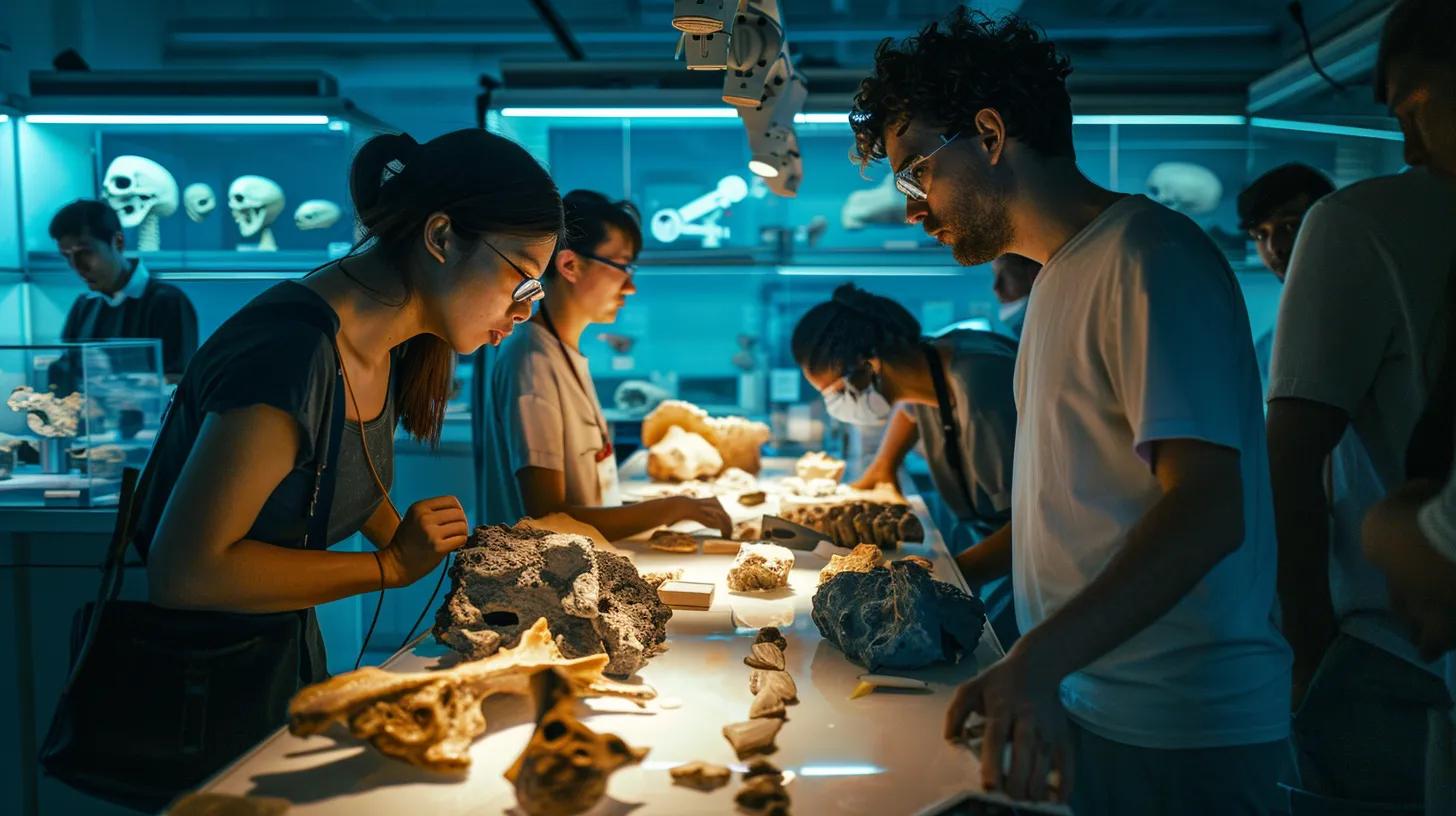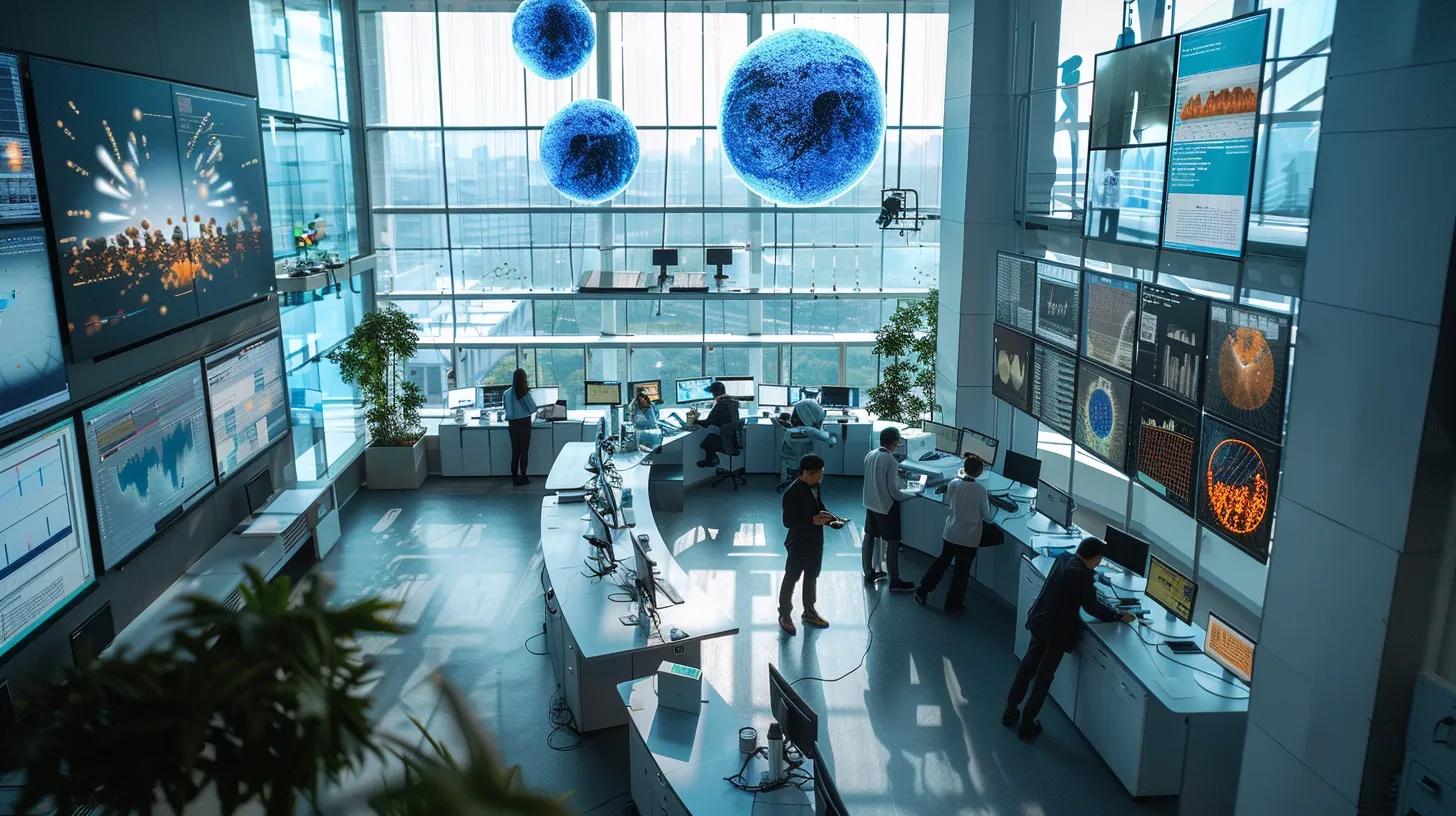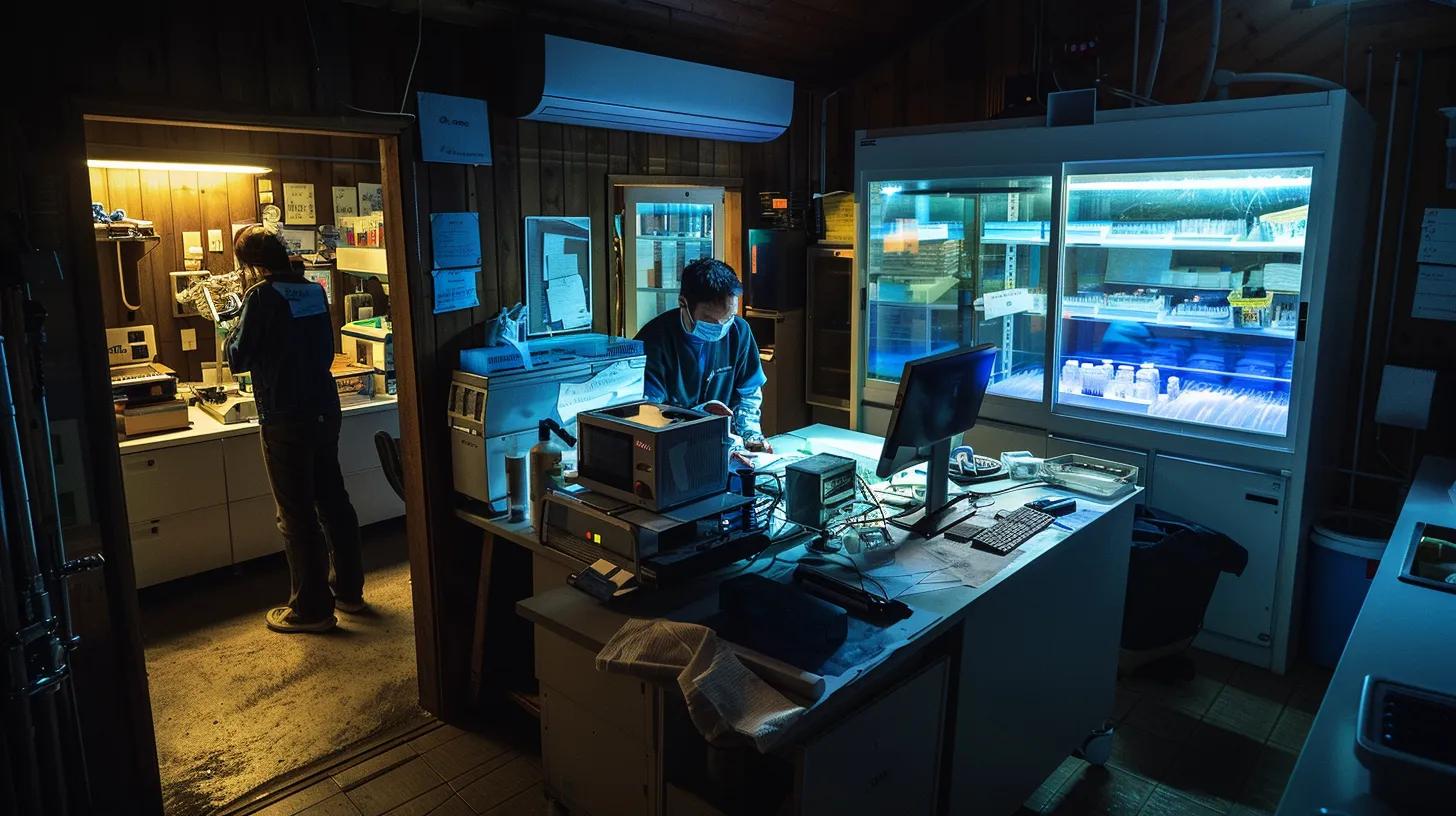Table Of Contents:
- Unraveling the Younger Dryas and Its Global Effects
- Understanding the Younger Dryas Climate Shift and Its Significance
- Analyzing the Effects of Younger Dryas on Flora and Fauna
- Evaluating Human Responses to the Younger Dryas Events
- Investigating the Younger Dryas and Global Climate Patterns
- Exploring Theories Related to Younger Dryas Triggers
- Learning From the Younger Dryas for Future Climate Challenges
- Frequently Asked Questions
- Final Thoughts
Unraveling the Younger Dryas and Its Global Effects
The Younger Dryas was a period of abrupt climatic reversal that interrupted the gradual warming following the last glacial maximum. Within just a few decades, temperatures dropped dramatically in many regions, leaving a lasting impact on flora, fauna, and human populations. Researchers have debated its causes—from meltwater pulses to cosmic impacts—and its consequences, which include shifts in vegetation, changes in animal migration patterns, and adaptations in human settlement and culture. By studying geological records, ice cores, and sediment deposits, scientists gain insights into both the rapid environmental shifts of that era and the mechanisms driving such changes. This article examines the Younger Dryas from its geological context to its effects on ecosystems and human societies, and discusses lessons relevant to modern climate challenges.
Transitioning now into the detailed examination of this climatic event, the following sections break down the Younger Dryas era and its global legacy.
Understanding the Younger Dryas Climate Shift and Its Significance
Define the Younger Dryas Period and Its Geological Context
The Younger Dryas occurred approximately 12,900 to 11,700 years before present, marked by a sudden, severe drop in temperatures following a prolonged warming trend at the end of the last ice age. Geological cores from lake beds and Greenland ice cores reveal that during this period, regional temperatures fell sharply—a clear deviation from the gradual warming expected due to insolation changes. In the Quaternary period, the Younger Dryas is unique as a brief but intense cold phase that reversed deglaciation trends and influenced global weather patterns.
Examine Temperature Fluctuations During the Younger Dryas
Ice core and marine sediment data indicate that high-latitude regions experienced cooling of up to 8°C within decades. Such abrupt temperature changes point to a major disruption in the climate system. Analyses of foraminifera in marine sediments and oxygen isotope ratios in ice cores show a stark transition from the relatively stable preceding period, underscoring the rapid onset of the cold conditions.
Explore the Causes of the Younger Dryas Climate Change
Multiple hypotheses have been proposed to explain this dramatic cooling. The most widely supported theory is that massive meltwater pulses from glacial lakes disrupted the ocean’s thermohaline circulation, particularly weakening the Atlantic Meridional Overturning Circulation (AMOC). Other explanations include volcanic eruptions, small fluctuations in solar radiation, or even a cosmic impact. Although each hypothesis is supported by different lines of geological and geochemical evidence, the freshwater influx remains the most accepted explanation.
Discuss Key Indicators and Evidence of Climate Shifts
Several indicators document the Younger Dryas. Ice core data from Greenland provide detailed records of atmospheric greenhouse gas concentrations, while marine sediment cores reveal changes in microfaunal assemblages consistent with cooler water temperatures. In addition, pollen analyses show shifts in vegetation patterns. Together, these multiproxy datasets offer a comprehensive picture of the abrupt climate changes during this period.
Identify the Duration and End of the Younger Dryas
The Younger Dryas lasted roughly 1,200 to 1,500 years—a short interval in geological terms. Its abrupt end was marked by a rapid warming that initiated the Holocene epoch. Sharp reversals in oxygen isotope ratios in ice cores confirm the swift transition back to warmer conditions, illustrating the climate system’s potential for rapid recovery after a period of disturbance.
Review Global Response to Climate Changes During This Era
Global impacts of the Younger Dryas were uneven. High-latitude regions experienced severe cooling, while many temperate and tropical regions maintained relative stability. Prehistoric communities adapted by altering settlement patterns and food procurement methods; plant and animal species shifted migration routes or adapted to colder conditions. These varied responses highlight that while the Younger Dryas was a global event, its local impacts were moderated by geographic, ecological, and human factors.
Analyzing the Effects of Younger Dryas on Flora and Fauna

Investigate How Plant Life Adapted to Colder Climates
The sudden onset of cold imposed significant stress on plant life. Shorter growing seasons and lower temperatures led many species to modify growth rates and reproductive cycles. Pollen records indicate a shift in some regions from open grassland landscapes to coniferous forests. In addition, many species experienced range contractions, retreating to refugia where conditions remained less severe, signaling both resilience and the potential for significant ecosystem reorganization.
Assess Impacts on Animal Species Diversity and Migration
Many animal species were forced to adapt by migrating to more favorable habitats, often moving northward or to higher altitudes. Large herbivores like mammoths and bison changed their migration routes, while predators adjusted their foraging strategies accordingly. Fossil records and isotope studies reveal a decline in biodiversity in some regions, as species less capable of rapid adaptation faced increased extinction pressures. These changes underscore the dynamic interplay between climate change and animal distribution patterns.
Review Extinction Events Linked to the Younger Dryas
The Younger Dryas is associated with extinction events among megafauna in North America and Eurasia. Several large species, including mammoths and saber-toothed cats, vanished during or shortly after this period. While human activities such as hunting may have contributed, the rapid climate changes greatly intensified the stress on these species, underlining the vulnerability of large, specialized animals to sudden environmental shifts.
Examine Changes in Ecosystem Structure and Function
The abrupt cooling led to significant rearrangements in ecosystem structure. As vegetation communities reorganized, entire ecosystems were redefined. For instance, wetlands expanded in areas where permafrost thaw increased waterlogged conditions, altering nutrient cycles and energy flows. These cascading effects disrupted established predator-prey dynamics and illustrate how a sudden climate shift can fundamentally alter ecosystem functioning.
Determine Regional Plant and Animal Resilience Strategies
Different regions developed unique strategies to cope with the harsh conditions. In certain areas, plants invested more in reproductive structures to maximize seed production during short growing periods, while animals adopted behaviors such as seasonal migrations or hibernation. The existence of diverse microhabitats provided crucial refugia, demonstrating the importance of biodiversity in buffering against climatic extremes—a lesson that bears relevance for modern conservation efforts.
Explore Archaeological Evidence of Ancient Species
Archaeological sites continue to provide evidence of the Younger Dryas’ biological impacts. Well-preserved pollen and animal remains in sediment layers show shifts in species composition towards those adapted to cold conditions. Additionally, changes in human tool use and settlement patterns reflect adaptations to altered ecological conditions. These findings, integrated with paleontological data, offer valuable insights into long-term ecological and climatic changes.
Evaluating Human Responses to the Younger Dryas Events
Discuss Prehistoric Human Adaptations to Climate Change
Prehistoric human communities faced immense challenges during the Younger Dryas. In response to resource scarcity, many groups diversified their subsistence strategies, shifting from big-game hunting to a mixed economy that included small game, fishing, and plant gathering. Archaeological evidence indicates changes in tools and settlement patterns that facilitated greater mobility and flexibility, allowing these communities to cope with unpredictable environmental conditions.
Analyze Migration Patterns of Early Human Populations
As familiar regions became inhospitable, human groups migrated in search of better living conditions. Genetic studies and the spatial distribution of archaeological sites support the idea of substantial migrations during this period. New settlement routes emerged, often following river valleys and coastal areas where milder microclimates prevailed. These movements not only ensured survival but also promoted cultural exchanges among disparate groups.
Review Changes in Hunting and Gathering Strategies
In response to declining populations of large prey, early humans adjusted their hunting strategies to target smaller, more abundant animals. This shift is well documented in the archaeological record through changes in tool design and hunting practices. In some regions, early storage techniques emerged to manage food supply uncertainties, highlighting human ingenuity in the face of climatic adversity.
Explore the Relationship Between Food Resources and Climate
Cooler temperatures and shorter growing seasons made wild plant foods less predictable. As a consequence, prehistoric peoples increasingly relied on rapidly renewable resources like fishing and small game hunting. This strategic shift, evidenced by both botanical and faunal records, not only affected daily subsistence but also had long-term social and cultural implications by forcing communities to reorganize around more opportunistic food acquisition methods.
Identify Cultural Shifts in Human Behavior During This Period
The Younger Dryas catalyzed significant cultural transformations. Archaeological artifacts from this time show innovations in tool making, art, and communal practices. These cultural shifts suggest that in addition to physical adaptations, there was a broader societal response involving increased resource sharing and the development of more complex social structures.
Assess Archaeological Findings Related to Human Settlements
Changes in settlement patterns during the Younger Dryas are evident from archaeological surveys across Europe, the Middle East, and Asia. Temporary campsites and seasonal gathering places became common near reliable water sources and fertile lands. These findings underscore the adaptive strategies that prehistoric communities employed in response to rapidly shifting environmental conditions.
Investigating the Younger Dryas and Global Climate Patterns

Connect the Younger Dryas to Modern Climate Science Lessons
The abrupt climatic fluctuations of the Younger Dryas serve as a cautionary tale for modern climate science. Researchers have drawn parallels between these rapid past transitions and today’s accelerated climate change. Studying the Younger Dryas helps scientists identify thresholds and feedback mechanisms—such as changes in the carbon cycle involving methane and carbon dioxide, and shifts in ocean currents like the AMOC—that may similarly trigger abrupt changes in our current climate.
Examine How Ocean and Atmospheric Systems Interacted
During the Younger Dryas, intimate interactions between oceanic and atmospheric systems were critical in driving temperature changes. Disruptions in ocean circulation—especially in the North Atlantic—had significant repercussions for atmospheric temperatures and precipitation patterns. Studies of marine sediment cores, which often capture details from the continental shelf, reveal that even minor shifts in ocean dynamics can have large-scale impacts on climate, a concept that remains central to modern climate models.
Review Feedback Mechanisms Influencing Global Temperatures
Feedback mechanisms played a key role during the Younger Dryas. For example, increased ice cover raised the albedo, reflecting more solar radiation and reinforcing cooling. In contrast, the gradual release of greenhouse gases from thawing permafrost provided some negative feedback. These interacting mechanisms are critical for understanding how relatively small changes can be amplified in the climate system.
Analyze the Role of Ice Sheets in Climate Change Dynamics
Ice sheets, particularly in Greenland, were central to the climate dynamics of the Younger Dryas. Fluctuations in ice volume directly affected both sea levels and ocean circulation. Remote sensing and ice core studies provide evidence that changes in ice sheet mass during this period were closely linked to the onset and termination of the cooling, offering important analogs for current concerns about ice sheet stability and sea level rise.
Discuss Implications for Understanding Current Climate Trends
Lessons from the Younger Dryas are directly applicable to modern climate debates. Current climate models must incorporate the possibility of rapid, threshold-driven changes in response to factors such as freshwater influx and ice sheet dynamics. By analyzing past events, scientists enhance projections for future warming and develop better strategies for mitigation and adaptation.
Explore Interdisciplinary Research on Climate Change History
The study of the Younger Dryas benefits immensely from an interdisciplinary approach that combines paleoclimatology, geology, archaeology, and atmospheric science. Integrating data from ice cores, marine sediments, and archaeological sites strengthens our understanding of abrupt climate events and aids in constructing robust climate models, which are essential for predicting future trends.
Exploring Theories Related to Younger Dryas Triggers
Review Hypotheses Regarding Cosmic Impacts on Climate
One debated hypothesis is that a cosmic impact, such as a comet or meteor strike, initiated the Younger Dryas cooling. Proponents cite the presence of rare extraterrestrial materials in sediment layers as possible evidence. Although this theory remains controversial, it has spurred further investigation into less common trigger mechanisms and the potential role of extraterrestrial factors in abrupt climate change.
Analyze Volcanic Activity as a Possible Contributing Factor
Another theory suggests that volcanic activity played a role by injecting significant amounts of aerosols into the atmosphere, which temporarily reduced solar radiation. While direct evidence linking specific eruptions to the entirety of the Younger Dryas cooling is lacking, volcanic activity may have acted in concert with other factors, amplifying the cooling effect.
Examine the Role of Freshwater Influx Into Oceans
The freshwater influx hypothesis is among the most widely supported explanations for the Younger Dryas. It posits that sudden meltwater releases from glacial lakes diluted ocean salinity in the North Atlantic, slowing down the AMOC. Data from marine sediment cores and isotopic measurements support this theory as a key mechanism for the rapid cooling observed during this period.
Investigate Solar Variability and Its Climatic Effects
Solar irradiance changes, though relatively minor, have also been proposed as a contributing factor. Studies of sunspot records during the late Pleistocene indicate that small solar downturns might have coincided with the onset of the Younger Dryas. However, due to the complexity of the climate system, solar variability is considered more likely to have worked together with other triggers rather than as the sole cause.
Discuss the Combination of Multiple Factors Influencing Change
A consensus is emerging that no single factor can fully explain the Younger Dryas. Instead, a combination of freshwater influx, volcanic activity, and modest solar variability likely interacted in a complex and synergistic manner. This integrated perspective highlights the complexity of Earth’s systems and aids scientists in reconstructing the sequence of events that led to this abrupt climate shift.
Assess the Evidence Supporting Various Trigger Theories
Evaluating the diverse hypotheses requires an interdisciplinary synthesis of geological, chemical, and archaeological data. Consistent sedimentary records support the freshwater hypothesis, while aerosol and sunspot data bolster the volcanic and solar theories respectively. Together, these lines of evidence build a case for a multifactorial cause of the Younger Dryas, enhancing both our understanding of the past and the predictive power of current climate models.
Learning From the Younger Dryas for Future Climate Challenges

Reflect on Key Takeaways for Contemporary Climate Awareness
The Younger Dryas illustrates that Earth’s climate can shift abruptly, with feedback mechanisms capable of amplifying even small disturbances. For modern society, this historical event underscores the importance of monitoring early signs of climatic change and investing in strategies that increase resilience against rapid environmental shifts.
Discuss the Significance of Climate Resilience in Modern Society
Modern societies must prioritize climate resilience, which includes adapting agricultural practices, urban planning, and infrastructure design to be more flexible in the face of rapid changes. The lessons from the Younger Dryas remind us that gradual changes can quickly escalate into significant disruptions, making resilience essential to sustainable development.
Review How Past Climate Events Inform Future Projections
Historical climate events like the Younger Dryas provide valuable data for refining current models. By understanding the triggers and feedbacks that drove past changes, scientists can better project future warming scenarios and identify potential tipping points that may lead to abrupt shifts in the climate system.
Encourage Proactive Measures Against Potential Climate Threats
The abrupt shifts witnessed during the Younger Dryas emphasize the need for proactive action. Investments in renewable energy, enhanced conservation practices, and scientific research into climate feedbacks are critical. Global cooperation is also necessary to manage transboundary climate risks and prepare communities for sudden challenges.
Promote Research Initiatives Focused on Historic Climate Data
Ongoing research into past climate events remains vital. Interdisciplinary studies that merge paleoclimatology, geochemistry, archaeology, and climate modeling continue to yield insights relevant to modern challenges. Supporting such research will lead to improved risk assessments and more accurate climate models.
Advocate for Global Cooperation in Addressing Climate Change
Finally, the interconnected nature of Earth’s climate systems means that local events can have global repercussions. The lessons of the Younger Dryas highlight the need for international cooperation in research, data sharing, and policy-making. Strengthening global partnerships, such as those under the intergovernmental panel on climate change (IPCC), is essential for an effective response to future climate threats.
The table above summarizes the major factors proposed to have triggered the Younger Dryas, highlighting key indicators and evidence that support a multifactorial cause for this abrupt climate change.
Frequently Asked Questions
Q: What was the Younger Dryas? A: The Younger Dryas was a rapid cooling event between approximately 12,900 and 11,700 years ago that interrupted the gradual warming following the last glacial maximum. It is characterized by sudden temperature drops recorded in ice cores and sediment deposits, significantly affecting global ecosystems.
Q: How did the Younger Dryas affect plant life? A: During the Younger Dryas, plant life adapted to colder conditions by shifting vegetation patterns. Pollen records show a transition from grassland-dominated areas to coniferous forests, reflecting changes in growing seasons and temperature that led to regional ecosystem reorganization.
Q: What evidence supports the freshwater influx hypothesis? A: Evidence such as changes in salinity levels recorded in marine sediments and altered oxygen isotope ratios supports the theory that a sudden influx of freshwater—from glacial meltwater—disrupted the Atlantic Meridional Overturning Circulation, precipitating rapid cooling.
Q: How did human populations cope with the Younger Dryas? A: Prehistoric communities adapted by modifying migration patterns, diversifying subsistence strategies, and changing their toolkits and settlement practices. These adaptations, seen in archaeological records, were crucial for survival amid rapidly shifting environments.
Q: Why is studying the Younger Dryas important for modern climate science? A: Understanding the Younger Dryas highlights how quickly Earth’s climate can change and illustrates the role of complex feedback mechanisms. Insights from this period help refine current climate models, improve future projections, and guide mitigation and adaptation strategies.
Q: Can the triggers of the Younger Dryas inform our understanding of current climate change? A: Yes, the interplay of freshwater influx, volcanic activity, and solar variability during the Younger Dryas demonstrates how multiple factors can interact to produce abrupt climate shifts. These mechanisms provide a historical context to inform modern climate policies.
Q: How do interdisciplinary studies enhance our knowledge of the Younger Dryas? A: By combining insights from geology, archaeology, climatology, and geochemistry, interdisciplinary studies create a robust framework for understanding the Younger Dryas. This multifaceted approach results in more accurate climate models and a better comprehension of abrupt climate events.
Final Thoughts
The Younger Dryas remains a paradigm of abrupt climate change, offering deep insights into the sensitivity of Earth’s climate system. Its study reveals rapid feedback mechanisms and regional variability crucial for understanding both past and future shifts. Drawing lessons from ice cores, marine sediments, and archaeological evidence, the Younger Dryas reinforces the importance of proactive adaptation and global cooperation in the face of accelerating climate change. Integrating these historical lessons into future research and policy-making is essential for preparing society against sudden climatic disruptions.
